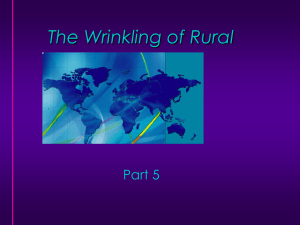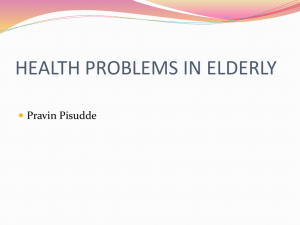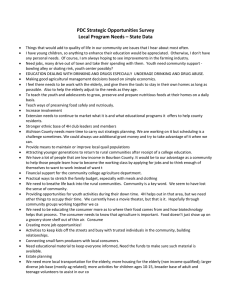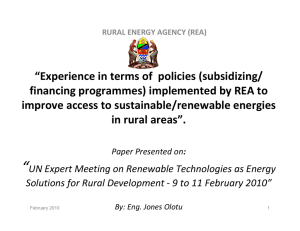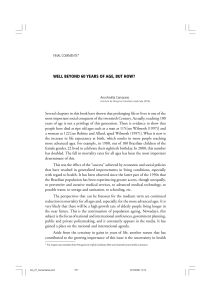case study china 1
advertisement
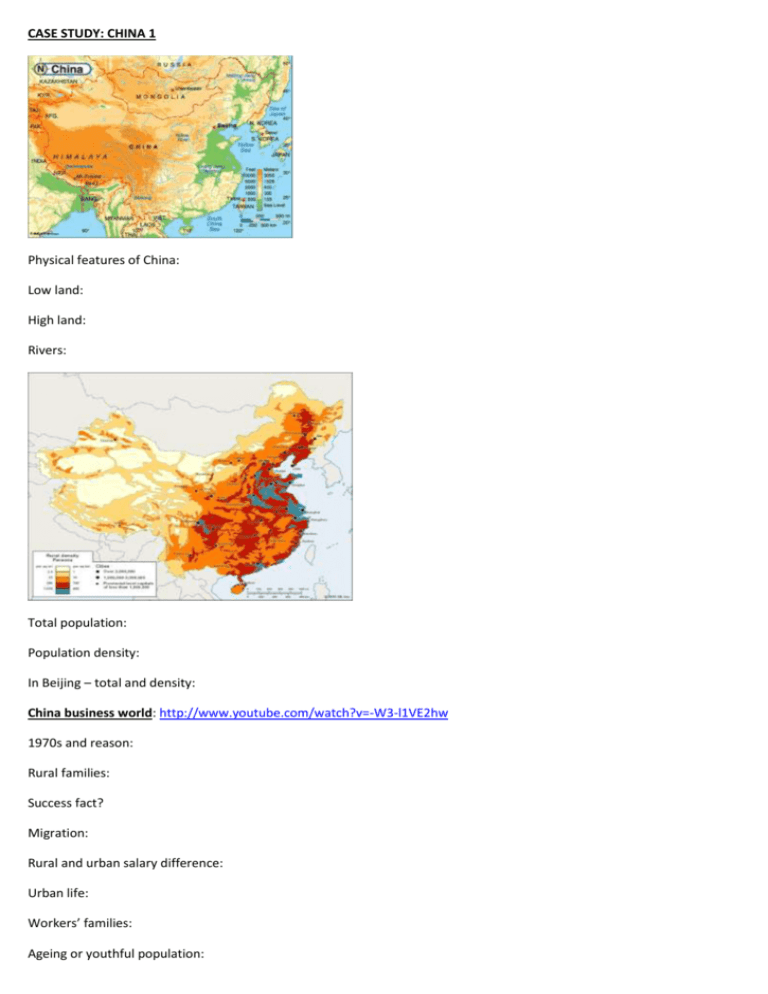
CASE STUDY: CHINA 1 Physical features of China: Low land: High land: Rivers: Total population: Population density: In Beijing – total and density: China business world: http://www.youtube.com/watch?v=-W3-l1VE2hw 1970s and reason: Rural families: Success fact? Migration: Rural and urban salary difference: Urban life: Workers’ families: Ageing or youthful population: 2030: facts about elderly: Problems of one child policy for the workforce: Salaries in China nowadays: Other countries in comparison: Solution for China: Rural problems in the future: Facts about China’s population: CIA factbook Average age people are expected to live to from birth: CBR: 12.25/1000/annum CDR: 7.31/1000/annum Natural increase: IMR: 12.2 deaths / Wealth: Number of children each woman has on average: Population growth rate: Why may there be a difference between pop growth rate and natural increase? % elderly at the moment: OVER POPULATION – definition: Why do some people think overpopulation is a myth and others think it is a reality? Describe the trend shown in the graph. (4) TIME: A history of the one child policy http://content.time.com/time/world/article/0,8599,1912861,00.html Read and summarise to around 15 bullet points China’s one child policy Journeyman Population has hit…………….. billion in 2005. Why was this population total seen as a success? What are the consequences of having two children? Why did the old couple want two? What happens to many women who get pregnant a second time? What is the ‘social compensation fee’ they talk about and how much is it? Mao Zedong – what was population in 1949 when he came to power? By 1979 the population was what? How long has the one child policy been in place? Is Beijing’s population higher than Manila’s? Can families have two children now? Yes No Fact: Which families? Why can they? Why are people concerned about a whole generation of only children? What services does the large manufacturing company provide? How is the policy different in the countryside? What are some of the health benefits of the policy? How has the imbalance between the sexes (more boys than girls) been caused? In the areas filmed, how many boys were there for every 100 girls? What are ‘red packets’ and why are they seen by many Chinese as necessary? What things happened to the elderly couple’s second child, the baby girl? What are ‘bare branches’? What is the programme offering cash and other incentives to families who have daughters called? How does it work? What reasons did the girl give for her mother wanting a boy? When will China’s population peak (reach its highest before it starts to fall)?







